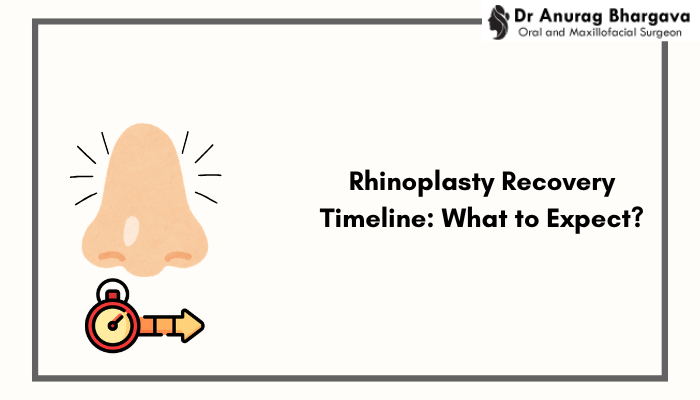Rhinoplasty, or nose reshaping surgery, is a life-changing procedure that enhances both aesthetics and functionality. While the surgery itself is quick, recovery takes time. Knowing what to expect at each stage of the healing process can help you feel prepared and confident. Let’s break down the rhinoplasty recovery timeline, week by week, to help you understand how your body heals after surgery.
Rhinoplasty Recovery Timeline
Immediate Post-Surgery (First 24-48 Hours)
Right after Rhinoplasty surgery, you’ll wake up with swelling, bruising, and some discomfort. Your nose will be bandaged, and you may have a splint to keep it in place. Here’s what you can expect:
- Swelling and bruising: The most noticeable side effects start immediately.
- Nasal congestion: Due to internal swelling, breathing through your nose will be difficult.
- Mild pain: Your surgeon will prescribe pain medication to manage discomfort.
- Draining and bleeding: Light bleeding from the nostrils is normal in the first 24 hours.
Tips for Comfort:
- Rest with your head elevated.
- Avoid touching or blowing your nose.
- Apply cold compresses around your eyes to reduce swelling.
Week 1: Managing Swelling and Bruising
The first week of recovery is the most challenging. Swelling and bruising around the eyes and nose peak around days 2-3 but gradually improve.
What to Expect:
- Splint removal: Your surgeon may remove the external splint around day 7.
- Bruising starts fading: By the end of the week, bruising becomes less intense.
- Nasal congestion continues: You may still have trouble breathing through your nose.
Tips for Comfort:
- Avoid physical activities to prevent stress on your nose.
- Keep sleeping with your head elevated.
- Follow your doctor’s cleaning instructions carefully.
Week 2: Major Bruising Subsides
By the second week, your face will start looking more normal. Most visible bruising disappears, and swelling begins to subside significantly.
What to Expect:
- Return to daily activities: Many people feel comfortable returning to work or school.
- Nasal congestion improves: You may still feel some blockage, but it’s getting better.
- Light exercise: You can start short walks but should still avoid heavy lifting.
Tips for Comfort:
- Stay hydrated to speed up healing.
- Continue avoiding strenuous activities.
- Follow up with your surgeon to ensure proper healing.
Week 3-4: Significant Improvement
By the end of the first month, your nose will begin taking its new shape, but some swelling will persist.
What to Expect:
- Most swelling disappears: The tip of the nose might still look puffy.
- Breathing improves: Nasal passages start opening up.
- Scars begin to fade: If you had an open rhinoplasty, incision marks will lighten.
Tips for Comfort:
- Start light exercise, but avoid direct sunlight on your nose.
- Keep following your post-op care routine.
- Be patient—your final results are still developing.
Month 2-3: More Natural Appearance
Around this time, your nose will look more refined, and most of the swelling will have gone down.
What to Expect:
- Nasal shape stabilizes: Your nose will start looking more natural.
- Sensation returns: Any numbness around the tip of your nose begins to fade.
- Minor swelling remains: Mostly in the nasal tip, but it’s not noticeable.
Tips for Comfort:
- Continue protecting your nose from injury.
- Use sunscreen if stepping out in the sun.
- Be gentle while washing your face.
Month 6-12: Final Results Become Visible
By now, your nose has almost completely healed. However, subtle swelling, especially at the tip, may take up to a year to fully disappear.
What to Expect:
- Near-final shape: Your nose will look very close to the expected results.
- Full recovery: Internal healing is mostly complete.
- Scars nearly invisible: If you had an external incision, it will be barely noticeable.
Tips for Comfort:
- Stick to a healthy diet to support tissue healing.
- Keep up with follow-up appointments to track progress.
- Enjoy your new, refined look!
Final Thoughts
Rhinoplasty recovery is a gradual process, requiring patience and care. While the first two weeks are the most intense, improvements become visible each month. In one year, your new nose will be fully healed, giving you the final, natural-looking results you desire.
If you’re considering rhinoplasty surgery, consult with an experienced facial plastic surgeon in Indore to understand what’s best for you. Every patient heals differently, but with proper care and a positive mindset, you’ll achieve beautiful results!

